When considering purchasing a new cooktop, you are likely to see more "induction cooktops" than even just a few years prior. Only a couple of years ago, it was less common for people to opt for purchasing an “induction cooktop”, due to the cost.
Induction cooktops have increased in popularity in recent years; sales have grown rapidly in the last three years, and a study in 2022 found that 70% of people are more likely to consider an induction cooktop as their next stovetop purchase.
So why are induction cooktops increasing in popularity and demand? Induction cooking offers a great option for energy-efficient and safe cooking methods.
The best induction cooktops look a lot like the best gas cooktops and electric cooktops, but they work very differently.
These cooktops transfer heat through induction via compatible pans and offer instant responses to smart controls, which allow you to keep your heat at a suitable level.
What’s more, because heat is transferred instantly from the cooktop to the pan, your glass surface won’t stay as hot as regular cookers.
If you’re considering buying an induction cooktop, there’s a range of pros and cons to consider before investing. First things first, though, you should understand what an induction cooktop is and how it works.
We spoke to Anja Prescher, Director of Brand Marketing at Bosch home appliances, to bring you expert knowledge on induction cooktops and help you figure out if they’re the right product for you.
What is an induction cooktop?
So, what is an induction cooktop, and how do they work?
An induction cooktop utilizes electricity, specifically, electromagnetic currents to transfer the heat directly to compatible heat pans, when placed on top.
Induction cooktops provide faster and more energy-efficient results because they distribute the heat directly to your cookware instead of via a burner, which then heats up your pot or pan.
The heating element or burner on an induction cooktop is an electromagnet, and when a magnetic metal such as your cookware is on it, it creates an electric current, which results in heat.
This allows heat to be directly transferred to the cookware and its contents. It also means that when a surface that is not directly compatible with the induction is placed upon it, the induction heating function turns itself off.
Once a compatible pan has been used and removed, the induction cooktop also cools quicker than regular gas or electric hobs.
Both factors make induction cooktops relatively safer than conventional gas or electric cooktops.
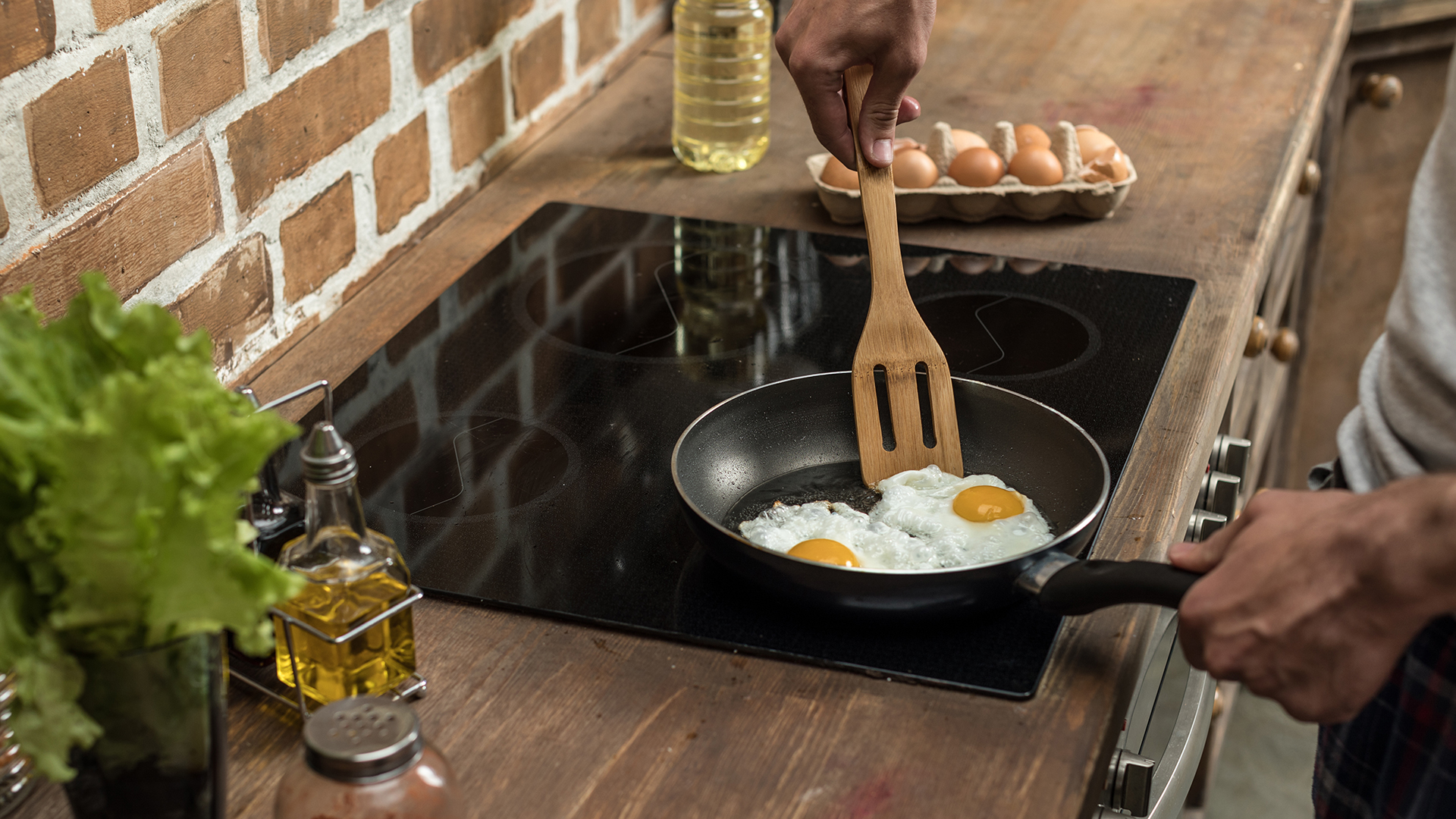
Beloved among chefs and home cooks alike, induction cooktops are perfect for those who desire heat efficiency, cooking flexibility, and easy cleaning, as well as sleek, integrated design.
Anja Prescher, Bosch
There are a few key differences between induction cooktops and other types of cooktops, such as gas and electric. The induction cooktops' ability to heat cookware precisely is one of them.
“Induction is one of the most centralized heat methods available, as its magnetic technology heats the iron in the cookware directly rather than the air surrounding it. This means that 90 percent of the heat produced goes into the cookware, compared to 40-55 percent with gas and 65-75 percent with electric.”
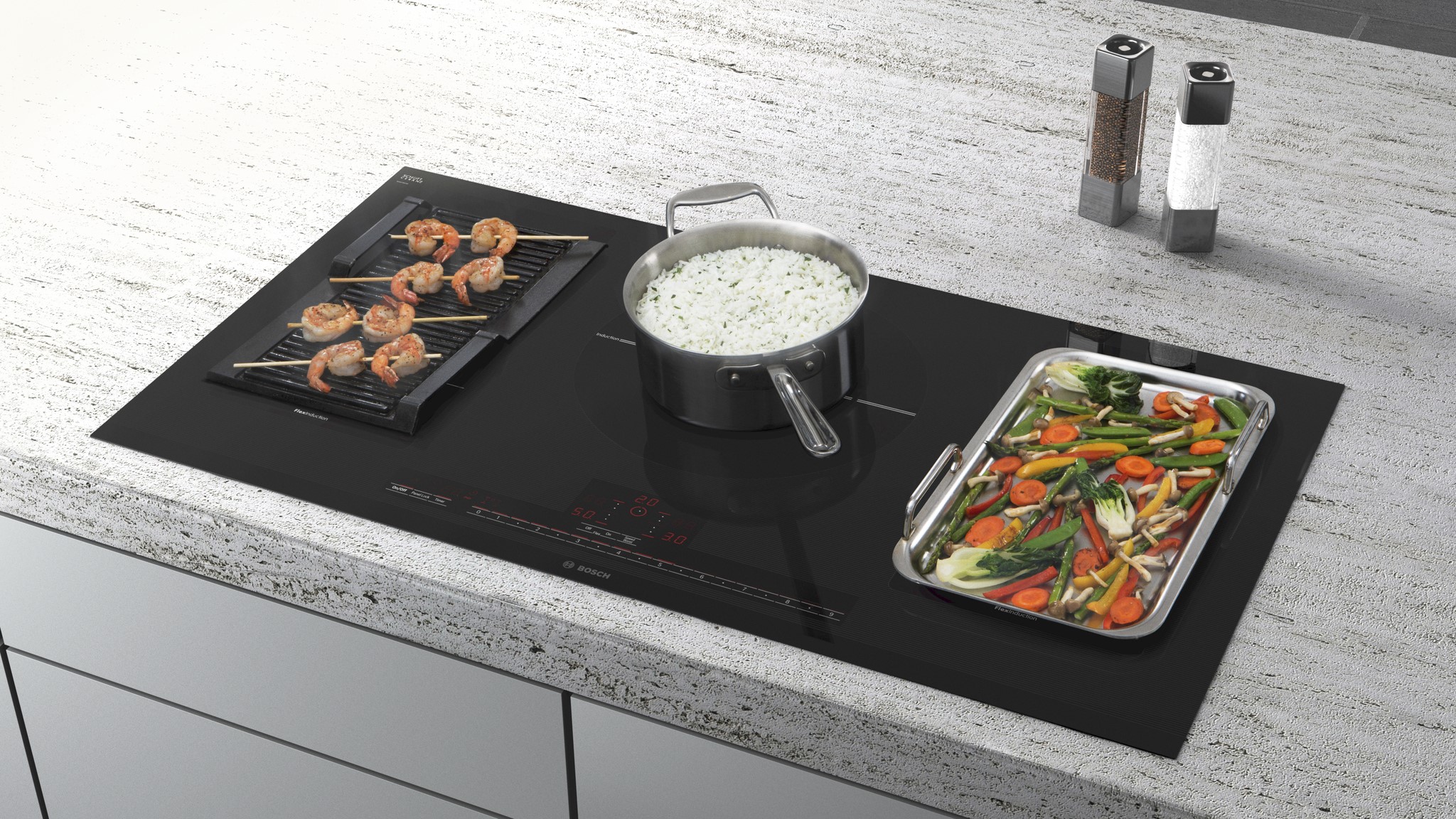
How do induction cooktops work?
“Induction cooktops use magnetic currents to produce heat that cooks your food. When magnetic cookware - cookware made with iron - is used, a magnetic field creates a current inside the base of the pan only, turning the cookware itself into the heater,” Prescher told us. “This means that the pan absorbs all heat developed and directs it toward your food to ultimately provide more precise and consistent results.”
According to Prescher, induction cooktops are designed to make simple cooking tasks quicker and easier.
“With the upward trend of technology in the home, it’s no surprise we are also seeing a demand for cooktops that provide multi-use functions. The movement toward connected appliances that help automate the mundane lends itself to a desire for cooktops that simplify the cooking process – from faster boiling times to enhanced user functionality as well as precise temperature control, streamlined design, and more.”
"The efficient way heat is generated with induction also helps deliver a consistent temperature across the base of the pan."
If it’s smart technology you’re after, an induction cooktop is a great place to start. Many models, such as the Samsung NZ30K7880UG and the Bosch Benchmark NITP069UC, are compatible with smart home technology, such as smart speakers and smartphone apps.
Bosch’s Home Connect smart system, for example, “enables you to monitor the entire process remotely and receive notifications via a smart device as well as the automatic deployment of matching ventilation hoods when the cooktop is turned on.”
Buying an induction cooktop: Pros
Induction cooktops may be preferred by those who cook in the summer or live in warmer climates, as less heat escapes from the cooktop into surrounding areas.
Anja Prescher, Bosch
Safety
Induction cooktops are significantly safer than other models because the cooktop surface doesn’t heat up as much. This means there’s less residual heat left when you turn off the cooktop and the burners lose heat quickly.
Another major safety advantage is that your cooktop won’t heat up if you switch it on by mistake because there’s no pan to transfer heat to. Some induction cooktops even switch off automatically when they detect you’ve removed a pan, which is both energy efficient and a great safety feature.
Energy efficiency
An induction cooktop uses electromagnetic coils to heat your pans directly, which is different from how a regular electric cooktop works. I
nstead of heating the surface of a glass cooktop, which then heats up a pan, electromagnetic induction transfers heat directly to your pan and leaves less radiant heat on your cooktop surface.
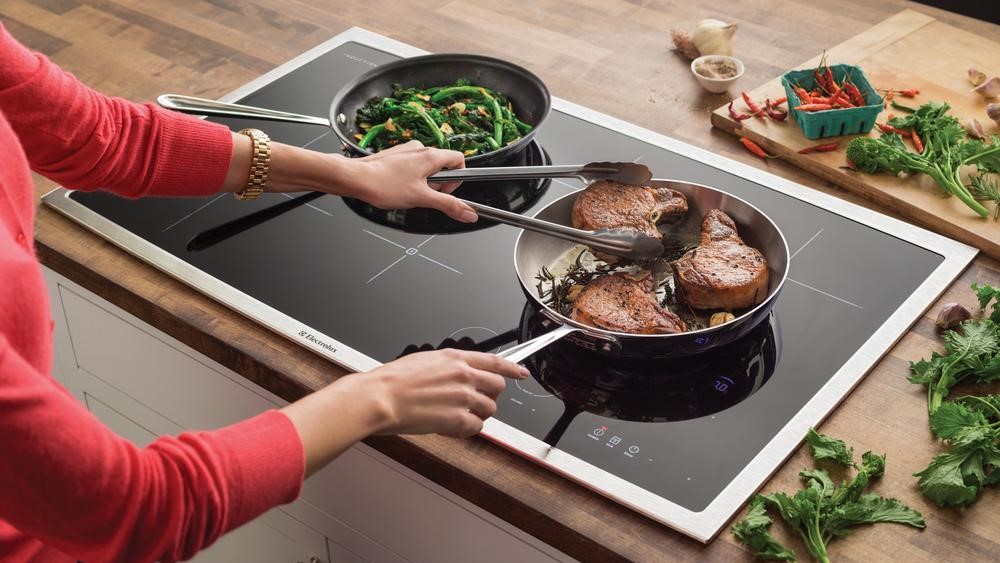
With regular ranges, your entire burner will heat up even if the base of your pan is smaller. With induction cooktops, only the base of your pan will be heated due to the electromagnetic current. This means there’s no heat lost around the sides of your pan, and by heating your pan directly as opposed to through a traditional cooktop surface, you ensure that most of your energy is going into heating up your pan. According to CDA, “Energy transfer with induction hobs is around 84 percent compared to around 74 percent for gas or ceramic electric, so there are good energy savings.”
"With more heat going directly to the food, this speeds up cooking time and also keeps the kitchen cooler."
Easier to clean
We’ve all been in a situation where our cooking has spilled or boiled over, leading to tiresome scrubbing of the range to remove cooked-on stains. Induction cooktops will save you that effort because any food that escapes from your pan will no longer be heated by the cooktop and, therefore, won’t cook. You can wipe off spills easily and quickly, but be careful not to scratch the surface of the cooktop, and these glass tops scratch easily.
"If there is not a pan containing iron on the cooking zone, heat is not produced," Anja Prescher told us. "This means the induction cooktop’s flat surface is cool when cookware is removed, or anywhere cooktop is not present, making cleanup fast and easy with no need to wait for the surface to cool or worry of spills cooking onto the surface."
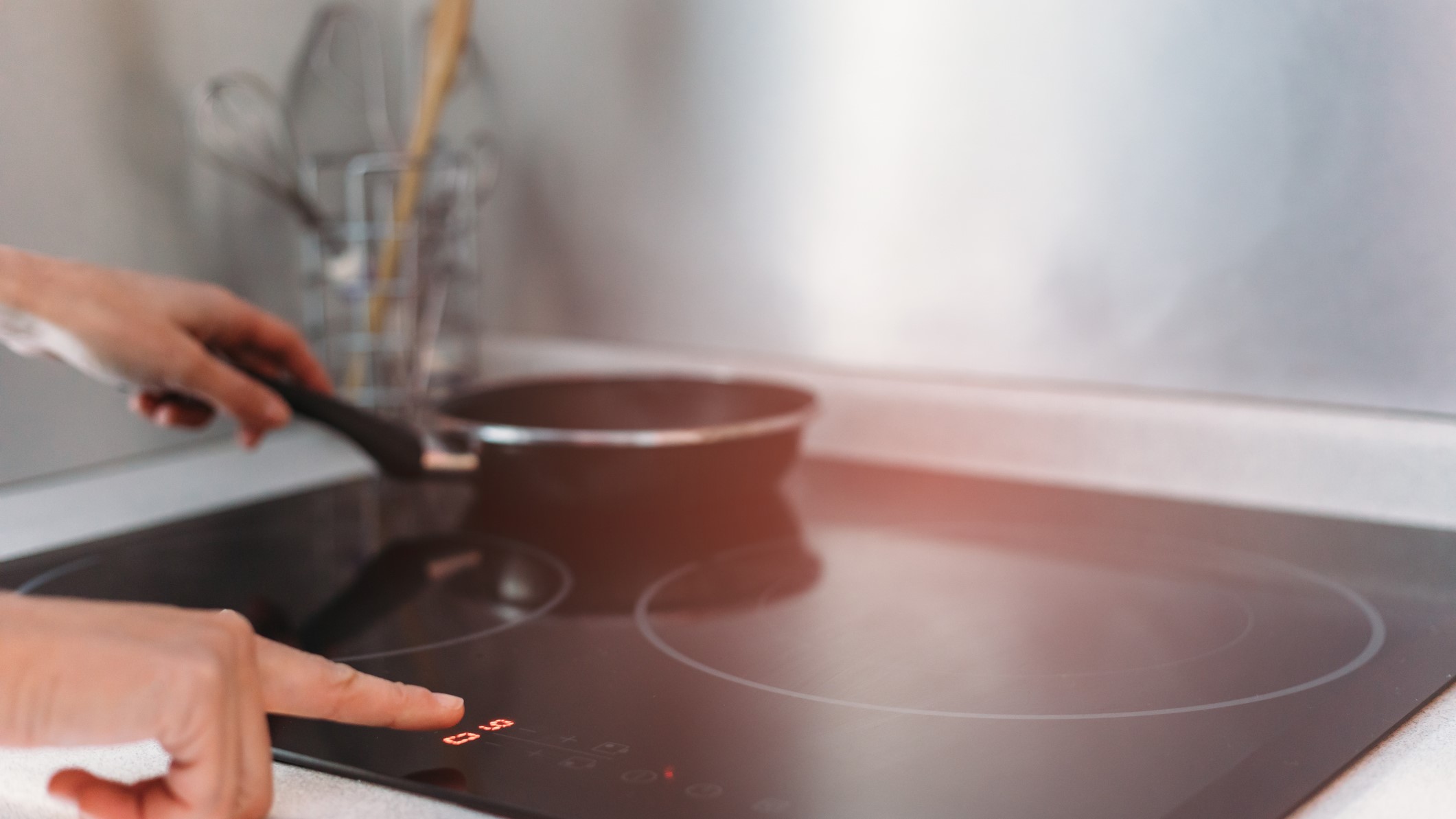
Faster cooking
There are numerous benefits to this type of technology, but one great advantage is how quickly it heats up food and water in your cooking vessels. With an electric stove, for example, the electric coil must first heat up, and heat is then transferred to the pot. With induction cooktops, you don't have to heat up any coil – the heat is directly transferred to the pot. This makes these cooktops much more energy-efficient compared to their gas and electric counterparts.
Furthermore, this allows you to quickly adjust the temperature of the element without waiting for the coil to heat up or cool down. The CDA says: “A pan of water will boil in nearly half the time that it would on a normal gas hob.”
Buying an induction cooktop: Cons
Noise
One drawback to this cooktop technology is that these products are known to be much louder than electric or gas stovetops. They can make a loud hum due to the magnetic currents, and the frequency of the sound varies depending on several factors, including the setting and the material and quality of the cookware you use.
Not suitable for all cookware
Induction cooktops require special cookware. Copper, aluminum, and ceramic wares don’t work. To use this advanced technology, you must be able to create an electronic current for the cooking vessel to heat up. Induction cooktops only work with cookware made with magnetic materials, such as stainless steel or cast iron.
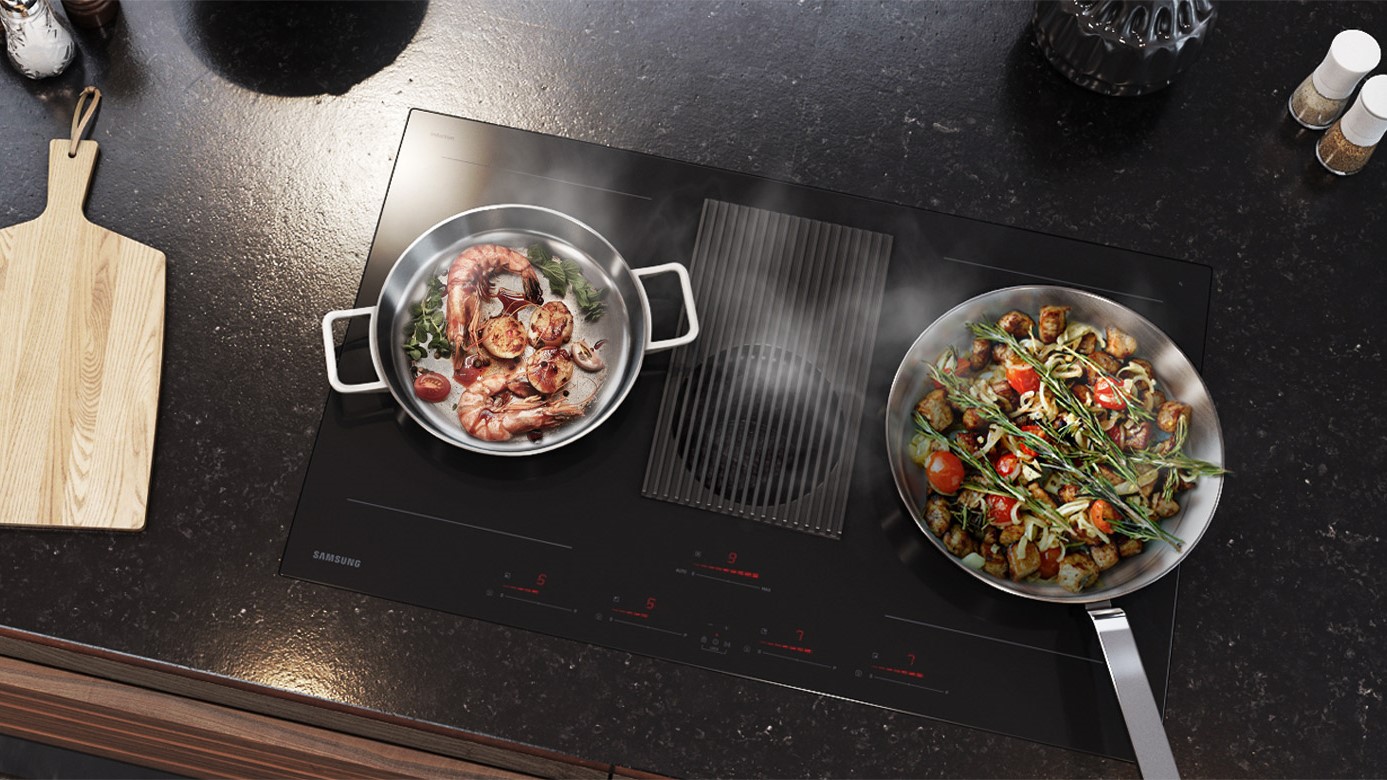
To ensure your cookware works on the cooktop, you can perform a magnet test. If a magnet sticks to the bottom of your cooking vessel, it's most likely to work well with your induction cooktop. If a magnet does not stick, you may need to invest in new cookware made from different materials in order to use the cooktop.
However, if you are determined to use stainless steel cookware with your induction cooktop, remember that not all stainless steel is created the same. Some work better than others on an induction cooktop. It is important to use the magnet test before making any purchases to ensure the cookware will work. If you already have a lot of ceramic cookware, investing in an induction cooktop may mean buying a lot of new pots and pans, which can be off-putting for some.
"Begin by determining what can be installed in your kitchen. For example, not all homes have a gas line that can be hooked up to a gas cooktop. If this is the case, you’ve already eliminated one option."
Anja Prescher, Bosch
Price
Induction cooktops have become less expensive over time. Some can be bought for well under $1,000, but they’re still more expensive on average than gas and electric cooktops.
Health and safety
If you have a pacemaker or live with someone who does, do not buy an induction cooktop. Pacemakers are small electrical devices that help to regulate your heart. The electromagnetic field in an induction cooktop could disrupt this, so it's not worth the risk.
Should you buy an induction cooktop?
In short, we think induction cooktops are underrated pieces of kitchen technology. They're safe, energy efficient, and will probably work with your existing selection of kitchenware.
If you do have a large amount of ceramic or copper cookware, though, it might be best to go for an electric or gas cooktop model.

